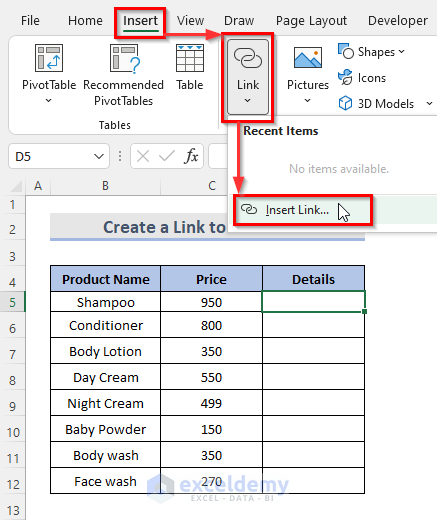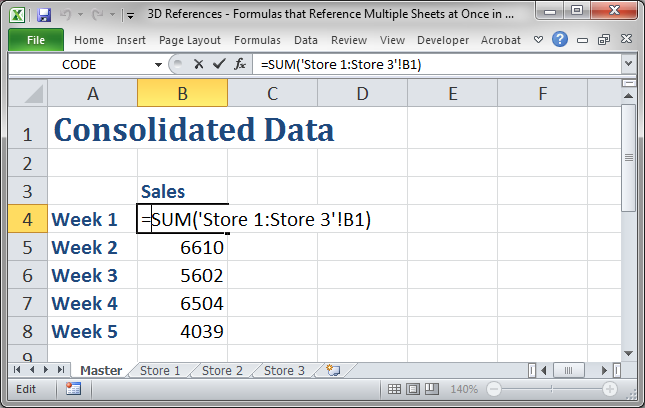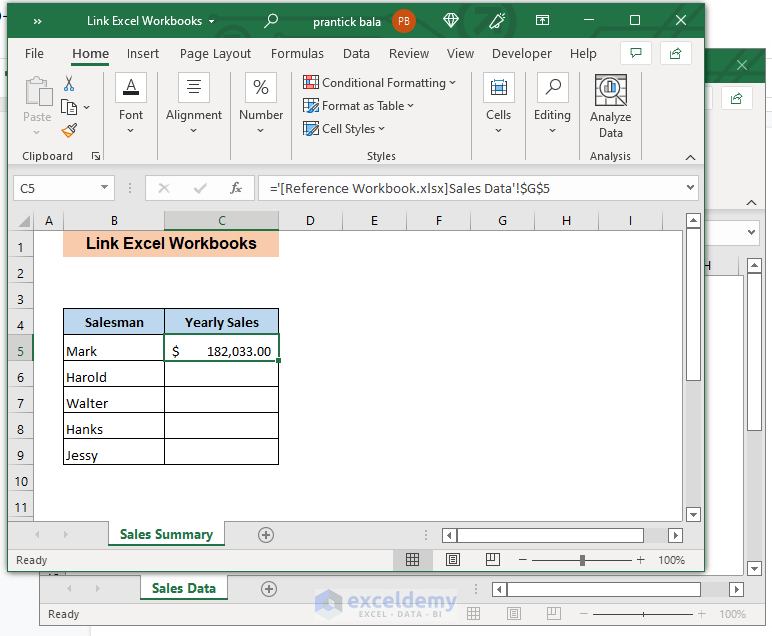Link Excel Sheets: Simple Steps to Connect Data

Introduction to Excel Sheet Linking


Excel, Microsoft’s powerful spreadsheet software, allows users to connect multiple worksheets or workbooks to streamline data management and analysis. Linking Excel sheets can significantly enhance productivity by allowing you to update and organize data from various sources in real-time. This process, often called external referencing, helps in reducing errors, simplifying workflows, and enhancing data integrity across your spreadsheets.
Benefits of Linking Excel Sheets

- Reduced Redundancy: By linking sheets, you avoid duplicating data, which minimizes the risk of errors from manual data entry.
- Real-Time Updates: Changes in one workbook reflect instantly in all linked workbooks, ensuring all parts of your data set remain current.
- Enhanced Data Analysis: With linked data, your analyses are based on integrated, comprehensive data sets, providing better insights.
- Improved Collaboration: Teams can work on different parts of a project simultaneously without the need for constant file sharing.
How to Link Excel Sheets

Linking Excel sheets involves several steps. Here’s a detailed guide on how to get started:
Step 1: Opening the Workbooks

- Ensure that all the workbooks you need to link are open.
- If you want to link to a sheet in another workbook, have both the source and destination workbooks open in Excel.
Step 2: Selecting the Cell for Data

Click on the cell in the destination workbook where you want the data to appear.
Step 3: Creating an External Reference

- With the destination cell selected, type the equal (=) sign to start the formula.
- Now, navigate to the source workbook. If it’s closed, you’ll need to open it manually or select it from the “Unsaved Changes” list if applicable.
- Click on the cell in the source workbook whose data you want to link. Excel will automatically create the formula with the file path.
Step 4: Formatting the Link

Excel will fill in the formula with the file path and the sheet reference. For example:
=[SourceWorkbook.xlsx]Sheet1!A1
📝 Note: Always check the formula for accuracy before entering, especially if you're dealing with shared drives or complex file paths.
Step 5: Confirming the Link

- Hit Enter to confirm the link. The cell in your destination workbook should now show the data from the source workbook.
- Any changes to the source cell will automatically reflect in the linked cell.
Advanced Tips for Excel Sheet Linking

- Named Ranges: Use named ranges in formulas for clearer references and easier updates.
- External Links Manager: In newer versions of Excel, you can manage external links more easily through the ‘Data’ tab.
- Data Validation: Implement data validation rules to ensure that linked data meets specific criteria.
Linking Multiple Sheets

If you need to link multiple cells across several workbooks, the process remains similar, but you’ll repeat the steps for each cell:
- Select a cell in the destination workbook.
- Enter the formula with the path to each source workbook.
- Copy and paste the formula to adjacent cells if linking ranges.
Pitfalls and Best Practices

While linking Excel sheets can be immensely beneficial, here are some common issues to watch out for:
- Broken Links: If the source file is moved or renamed, links will break. Regularly check and update links or use relative paths where possible.
- Circular References: Avoid formulas where one cell links back to itself directly or indirectly.
- Security: External references can pose security risks. Be cautious about allowing external content.
- Performance: Large numbers of links can slow down Excel. Optimize by linking only what’s necessary and use summary sheets for bulk data.
🔍 Note: Use the Excel "Link Consolidation" feature if you're working with multiple sources and need to update periodically without live linking.
Summing Up Excel Sheet Linking

Linking Excel sheets is a vital skill for anyone who deals with data regularly. By understanding and applying these methods, you can streamline your data management, ensure data consistency, and boost your analytical capabilities. Remember to follow best practices to avoid common pitfalls, making your Excel experience more efficient and error-free.
Can I link cells from different workbooks?

+
Yes, you can link cells from different workbooks. You just need to have both workbooks open, select the destination cell, type the equal sign, and then navigate to the source cell in the other workbook.
What happens if I rename or move the source workbook?

+
If you rename or move the source workbook, the links will break. You’ll need to update the links manually or through Excel’s External Links Manager if possible.
How do I know if my link to another sheet is working?

+
The linked cell in the destination sheet should automatically update when the source data changes. If it doesn’t, check for broken links or issues with file permissions.
What if I want to remove all links at once?

+
You can remove all external links using the ‘Break Link’ feature found in the ‘Data’ tab of Excel or manually by replacing linked data with copied values.



